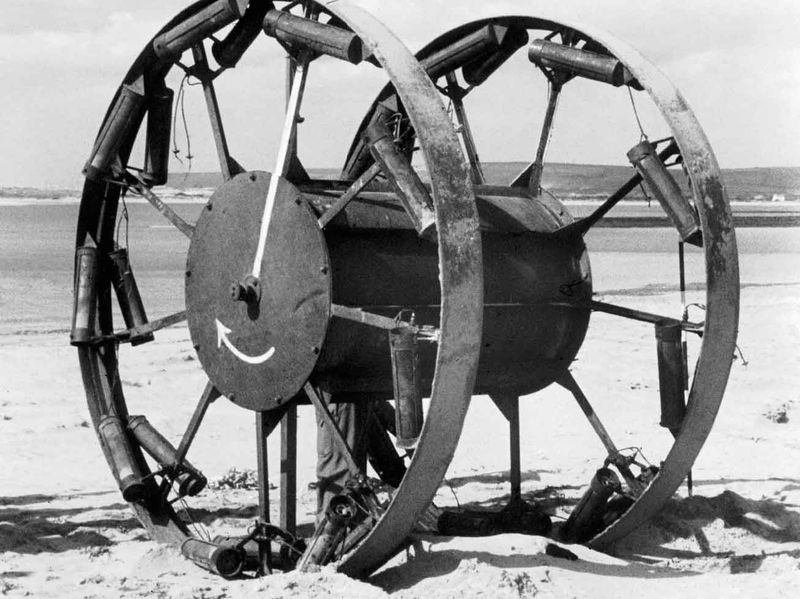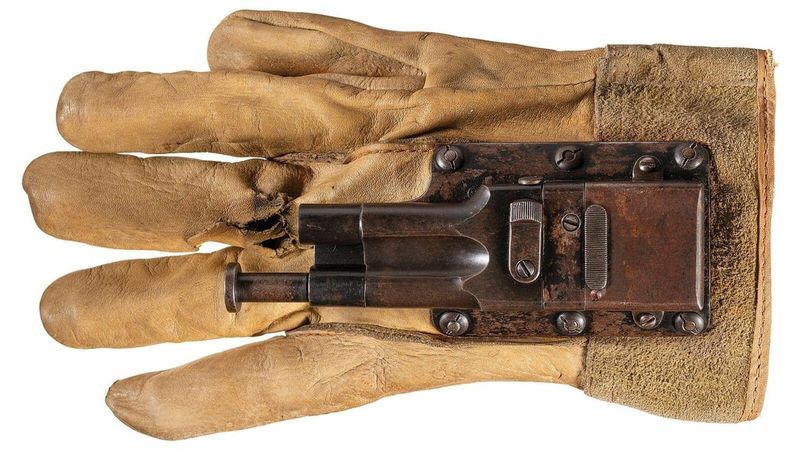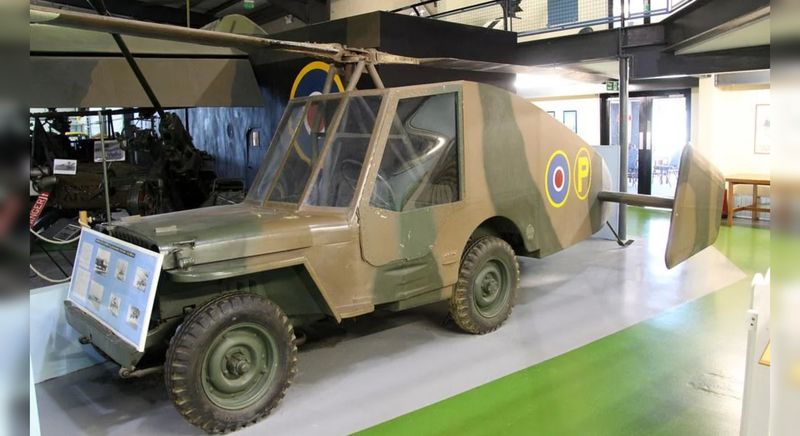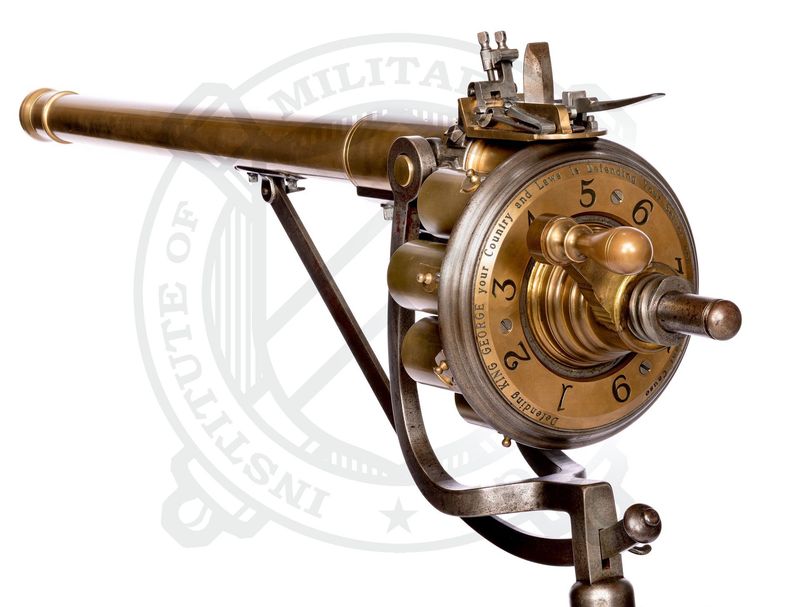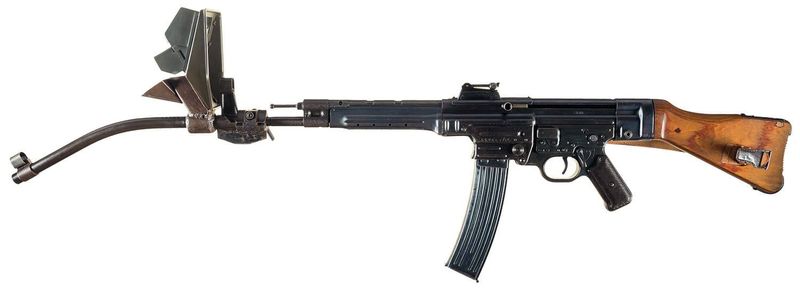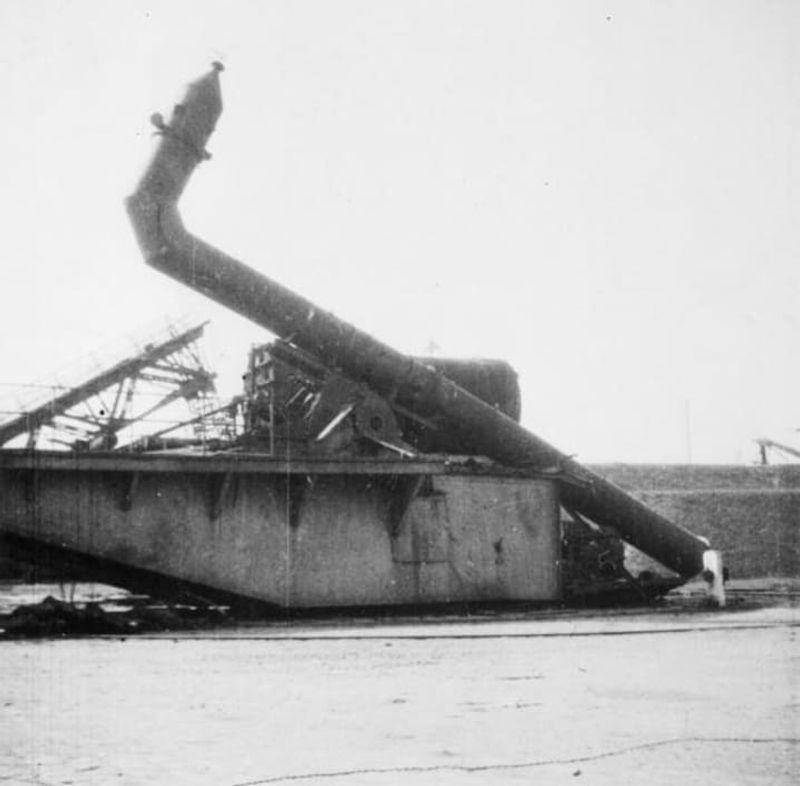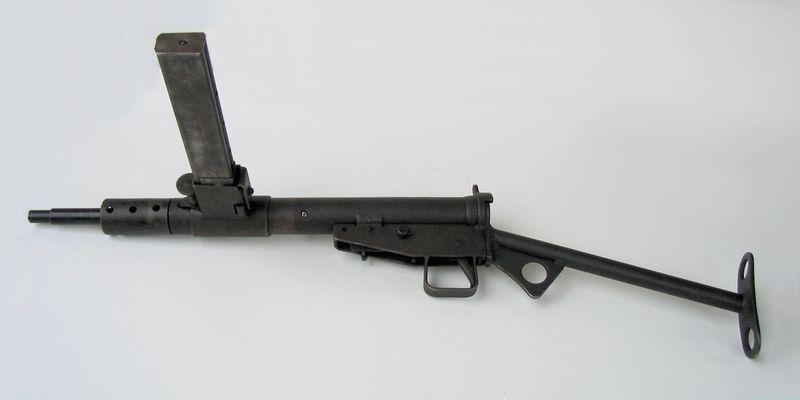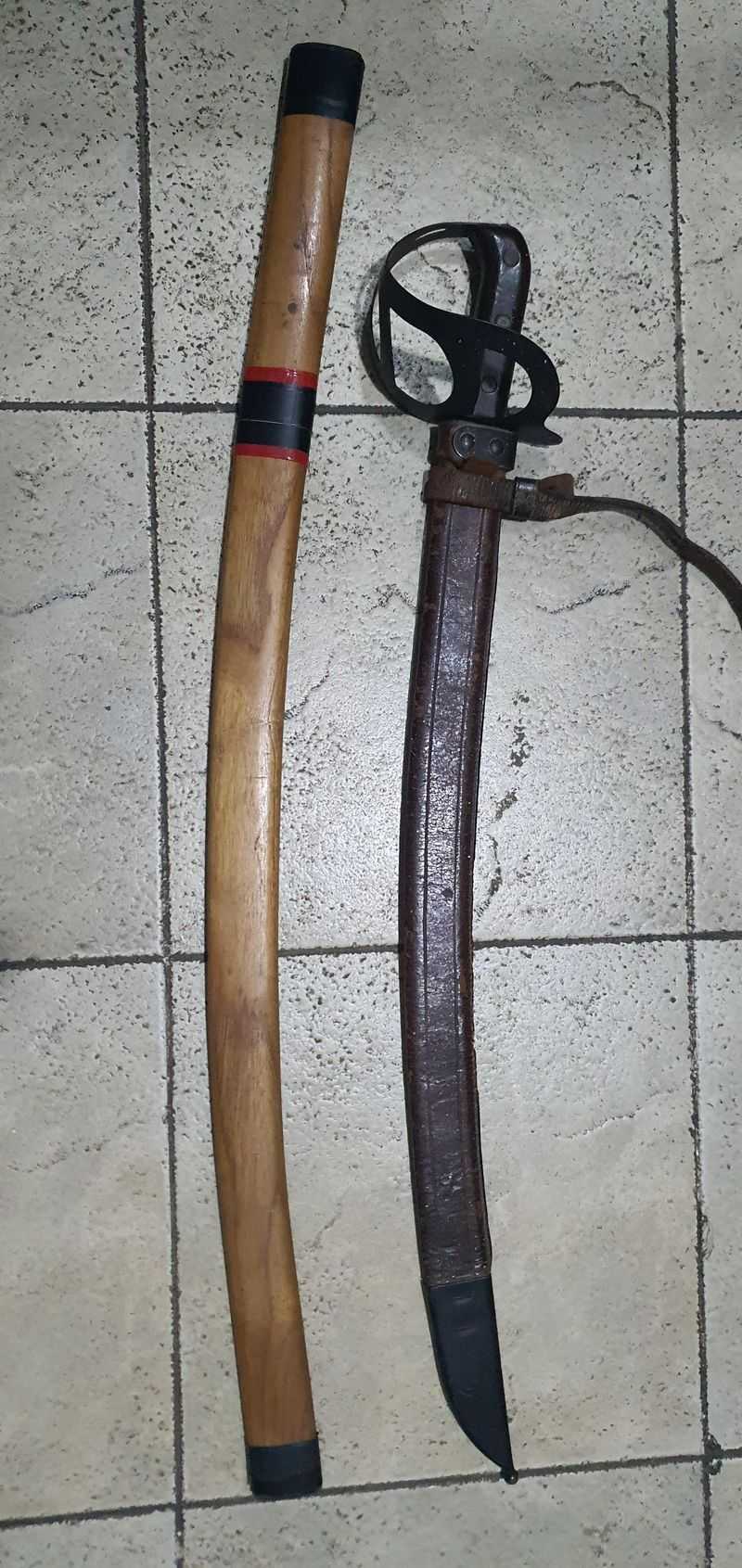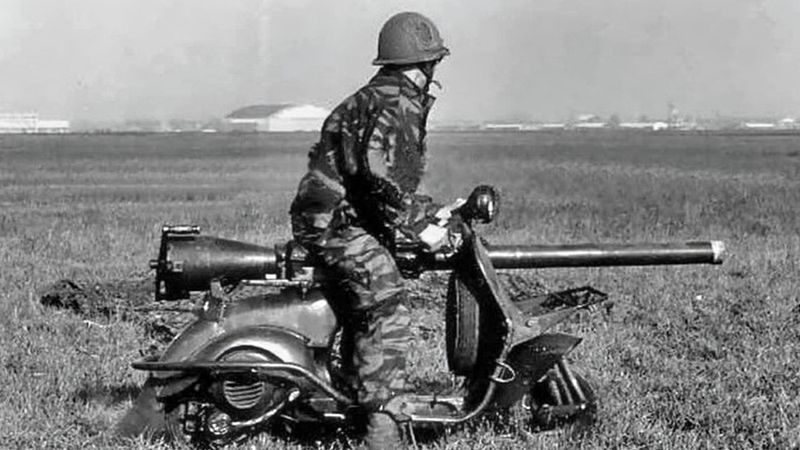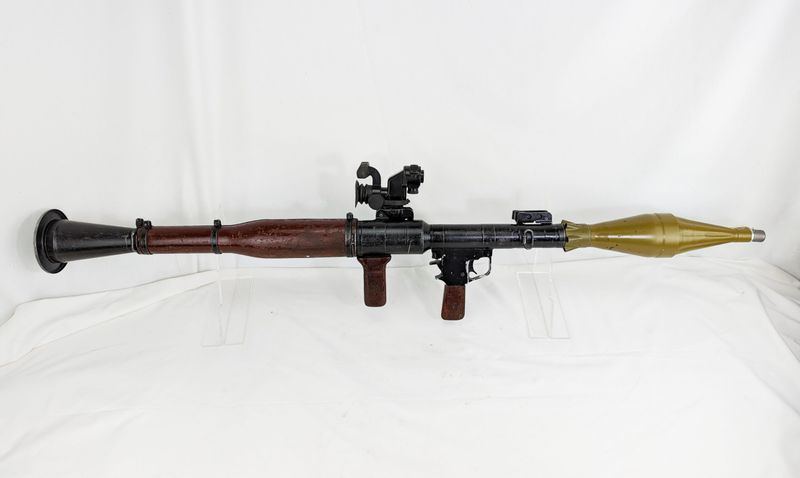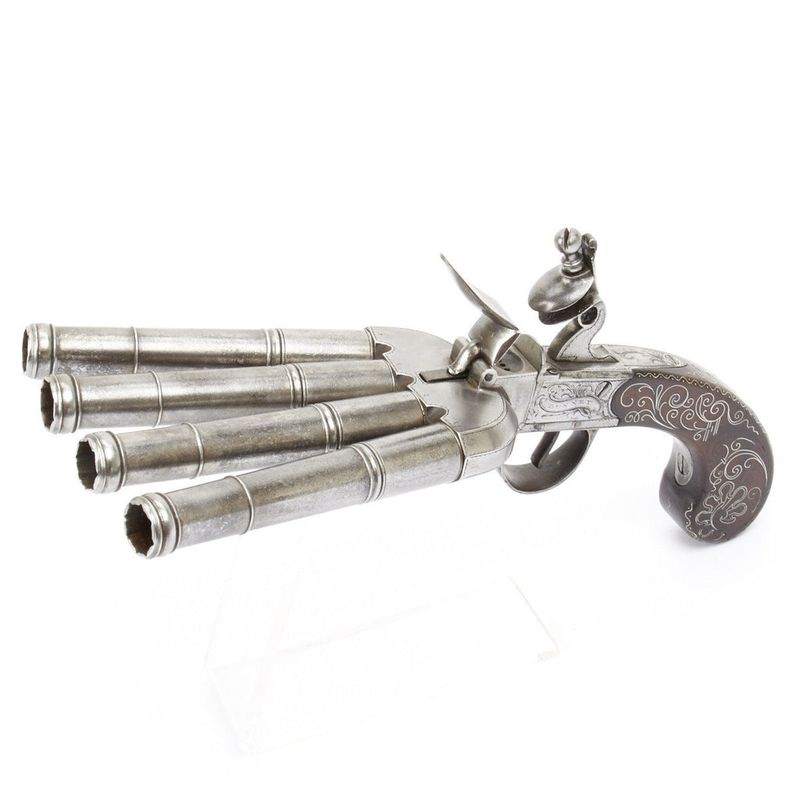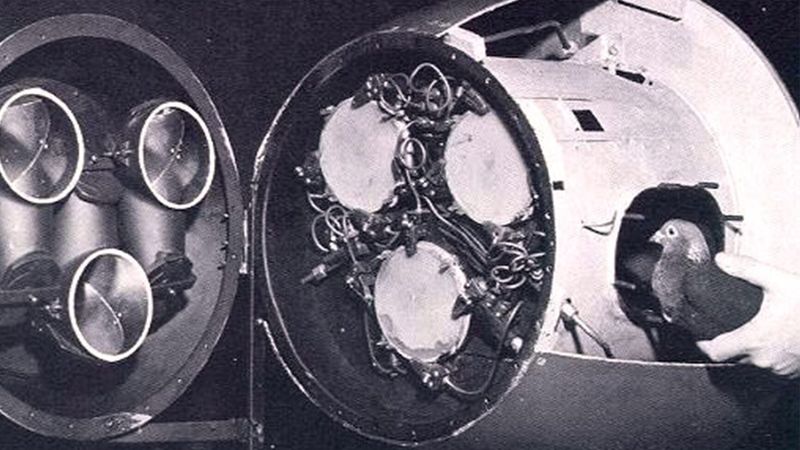Throughout history, military engineers have created some truly bizarre weapons in the quest for battlefield dominance.
While innovation drives progress, not every invention deserves a place in the arsenal of war.
Some weapon designs were so impractical, dangerous to their users, or just plain ridiculous that they never should have left the drawing board. Here’s a look at history’s most spectacular military misfires.
1. The Great Panjandrum: Rocket-Powered Wheel of Chaos
Imagine a massive wooden wheel packed with explosives and propelled by rockets. The British Navy’s WWII creation was meant to blast through Nazi defenses but had one tiny flaw – it couldn’t roll straight!
During testing, the Panjandrum would veer wildly off course, sending rockets flying in random directions as terrified officials dove for cover. In one infamous test, it changed direction and chased a cameraman down the beach.
The spectacular failure was eventually abandoned, but not before becoming a perfect example of when ambition outpaces physics.
2. Glove Pistol: The Ultimate Handgun (Literally)
Developed for OSS agents during WWII, this single-shot pistol was built directly into a leather glove. Fired by making a fist and pressing your thumb on a special button, it embodied the spy fantasy but missed on practicality.
With terrible accuracy beyond point-blank range, no ability to reload quickly, and the constant risk of accidentally shooting yourself, it was more dangerous to the wearer than any enemy. Agents were essentially walking around with a loaded gun pointed at their palm.
Thankfully, few were actually deployed in the field.
3. Bat Bombs: Explosive Flying Mammals
American dentist Lytle Adams pitched this wild idea to the White House during WWII: attach tiny incendiary bombs to bats and release them over Japanese cities. The bats would roost in buildings before the bombs detonated, creating widespread fires.
The military actually developed and tested the concept. During one demonstration, the bats escaped and set fire to a military airfield instead.
Despite millions spent on development, the project was canceled when the atomic bomb program proved more promising – though arguably less creative.
4. Hand Mortar: The Portable Face-Remover
This 17th-century weapon combined the worst aspects of grenades and cannons into one handheld disaster. Resembling a stubby pistol with a massive barrel, it fired explosive shells in a high arc toward enemy positions.
The major design flaw? Unreliable fuses and primitive metallurgy meant these weapons frequently exploded in the user’s hands or face. Some versions were so heavy they required a second person just to aim them.
Soldiers quickly learned to volunteer others for hand mortar duty, making it perhaps history’s least coveted battlefield assignment.
5. Hafner Rotabuggy: The Flying Jeep That Couldn’t
British airborne forces dreamed of dropping Jeeps directly into battle zones. Their solution? Attach a rotor to a standard Jeep and call it the Rotabuggy. What could possibly go wrong?
Test pilots discovered the obvious answer as they struggled to control what was essentially a heavy metal box with spinning blades. When towed behind aircraft for testing, it bounced violently and threatened to shake itself apart.
The project was mercifully abandoned in 1944 when gliders proved more effective at delivering vehicles without turning them into deadly flying pinwheels.
6. Puckle Gun: The Religiously Discriminating Machine Gun
Invented in 1718 by James Puckle, this early machine gun wasn’t just ahead of its time – it was morally questionable too. The tripod-mounted weapon featured interchangeable cylinders: one firing round bullets for Christian enemies and another firing cube-shaped bullets for Muslim Turks.
The square bullets were designed to cause more painful wounds and, according to Puckle, “convince the Turks of the benefits of Christian civilization.” Beyond its religious bigotry, the gun jammed constantly and was too complicated for practical battlefield use.
Investors wisely avoided funding its production.
7. Krummlauf: The Gun That Shot Around Corners
German engineers during WWII created the Krummlauf – a curved barrel attachment for rifles that allowed soldiers to shoot around corners while staying safely behind cover. Brilliant in theory, catastrophic in practice.
The bullets often shattered inside the curved barrel, spraying metal fragments everywhere including back toward the shooter. Those that did make it through lost most of their velocity and accuracy.
After only about 300 shots, the barrels would crack and fail completely. The Nazis eventually abandoned the idea, proving that sometimes the shortest distance between two points really should be a straight line.
8. Windkanone: The Nazi Wind Gun
In their quest for wonder weapons, Nazi scientists created the Windkanone – a massive cannon that fired… air. Using explosive charges to create pressure waves, this bizarre weapon was supposed to knock enemy aircraft from the sky using concentrated blasts of wind.
Despite its impressive size and thunderous noise, the Windkanone proved completely ineffective in actual combat. At best, it could shatter windows at close range or knock over wooden boards during demonstrations.
The resources wasted on this project could have been used for functional weapons – a fortunate miscalculation for the Allies.
9. Sten Gun Silencer Cane: Undercover Disaster
British intelligence agencies created this walking cane that concealed a silenced Sten submachine gun inside. The spy-worthy weapon allowed agents to fire without revealing the gun – simply point the cane and pull a hidden trigger.
Unfortunately, with no proper sights or stable grip, hitting anything beyond point-blank range was nearly impossible. The thin cane disguise also meant the barrel overheated quickly, sometimes melting the casing after just a few shots.
Most agents preferred conventional hidden weapons that they could actually aim.
10. Wujing Zongyao Fire Lance: Ancient Flamethrower Follies
Ancient Chinese soldiers pioneered gunpowder weapons with the Fire Lance – a simple bamboo tube filled with explosives and shrapnel attached to a spear. When ignited, it spewed flames, smoke, and projectiles toward enemies.
The primitive design made it wildly unpredictable. Users often suffered burns, and the weapon had an alarming tendency to explode in the wielder’s hands. The effective range was merely a few feet, requiring soldiers to get dangerously close to enemies.
While historically significant as a gunpowder weapon precursor, it was more terrifying to its users than opponents.
11. Anti-Tank Dog Mines: When Good Boys Make Bad Bombs
The Soviet Union’s desperate WWII innovation involved strapping explosives to dogs trained to run under German tanks. The dogs were conditioned to associate the undersides of tanks with food, with the expectation they would trigger a detonator upon reaching an enemy vehicle.
The fatal flaw? Soviet dogs were trained on Soviet tanks, which used diesel fuel. German tanks used gasoline with a different smell, confusing the dogs who often returned to their handlers’ trenches – explosives still attached.
The program was quickly abandoned after causing more friendly casualties than enemy losses.
12. Klewang Sword Pistol: When Two Weapons Become Less Than One
Dutch colonists in Indonesia created this hybrid weapon combining a traditional klewang sword with a flintlock pistol built into the hilt. The idea was to give soldiers both a shooting and slashing option in one convenient package.
In reality, it excelled at neither function. The sword portion was too heavy and unbalanced for proper swordplay, while the pistol component was wildly inaccurate and difficult to reload in combat.
The awkward weight distribution meant that after firing the single shot, soldiers were left with an inferior sword – making it twice as disappointing in battle.
13. Vespa 150 TAP: The Scooter That Thought It Was a Tank
The French military mounted a 75mm recoilless rifle onto a Vespa scooter during the Algerian War, creating what might be history’s least intimidating anti-tank vehicle. Soldiers were expected to drive this top-heavy contraption into battle, stop, set up the cannon, and fire.
The scooter couldn’t actually fire while moving, and the massive recoil made accuracy questionable at best. After firing, the lightweight scooter offered zero protection as the operator reloaded in the open.
While adorably ambitious, it represented a death trap for any soldier assigned to this peculiar vehicle.
14. Rocket-Powered Bayonet: The Soviet Stabbing Missile
Soviet weapons designers created a bayonet with a small rocket motor built into the blade. The idea was that soldiers could launch the bayonet at enemies before closing to hand-to-hand combat, essentially turning their rifle into a small rocket launcher.
The reality was far less impressive. The rockets were wildly inaccurate, the bayonet often failed to detach properly, and soldiers risked setting themselves on fire during launch. After firing, troops were left without their bayonet – the very tool they needed for close combat.
Few soldiers volunteered to test this flaming disaster in actual combat.
15. Duck’s Foot Pistol: The Spray-and-Pray Handgun
Popular among ship captains and prison guards in the 18th century, this bizarre pistol featured multiple barrels splayed out like a duck’s foot. The intention was to fire several shots simultaneously to control mutinies or mobs without needing to aim precisely.
The severe drawback? Accuracy was nonexistent beyond extremely close range, and the powerful recoil often injured the shooter’s wrist. The cumbersome design made it nearly impossible to reload quickly in a crisis situation.
Most users discovered that intimidation was its only practical function – actually firing it was typically a last resort.
16. Nock Volley Gun: The Shoulder-Breaking Showstopper
The British Royal Navy’s Nock Volley Gun packed seven barrels into one shoulder-fired weapon, allowing sailors to fire all seven simultaneously. The spectacular weapon was designed for repelling boarders during close naval engagements.
Unfortunately, the recoil was powerful enough to break collarbones and dislocate shoulders. The massive flash and smoke also temporarily blinded the user and revealed their position to enemies.
Most sailors preferred to fire it with the stock braced against a ship’s rail rather than their shoulder – a telling indication of its brutal kickback.
17. Flamethrower Tanks: Rolling Firebombs
Mounting flamethrowers on tanks seemed like a terrifying combination. These vehicles could spray liquid fire up to 100 yards, clearing bunkers and trenches with horrifying efficiency.
The fatal design flaw? Tanks carrying massive tanks of pressurized, flammable fuel became extraordinarily vulnerable targets. Even minor enemy fire could transform these weapons into catastrophic fireballs that consumed their own crews.
Many tank commanders refused these modifications, preferring conventional armaments that wouldn’t turn their vehicles into rolling bombs. The psychological impact on enemy troops rarely justified the extreme danger to the operators.
18. The Pigeon-Guided Missile: Feathered Targeting System
During WWII, behavioral psychologist B.F. Skinner developed a missile guidance system controlled by trained pigeons pecking at a target screen. The birds, conditioned to recognize enemy ships, would peck at the image, adjusting the missile’s fins to stay on course.
The military initially invested $25,000 in the project before realizing the absurdity. Pigeons were easily distracted, confused by similar-looking objects, and prone to panic inside a speeding missile.
The program was abandoned in favor of electronic guidance systems that didn’t need birdseed or get motion sickness.

